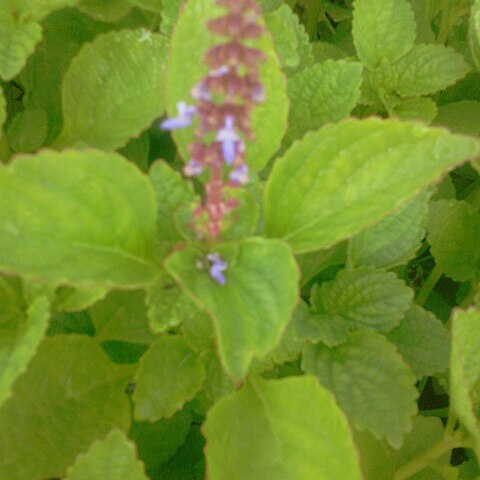A small annual herb. It grows 15-30 cm high. It can lie along the ground or curve upwards. The stem is succulent. The leaves are thick and have a smell like mint. The flowers are small and pale violet. There are small, dark brown tubers in clusters at the base of the stem. They can be 20 cm long by 2 cm wide.

